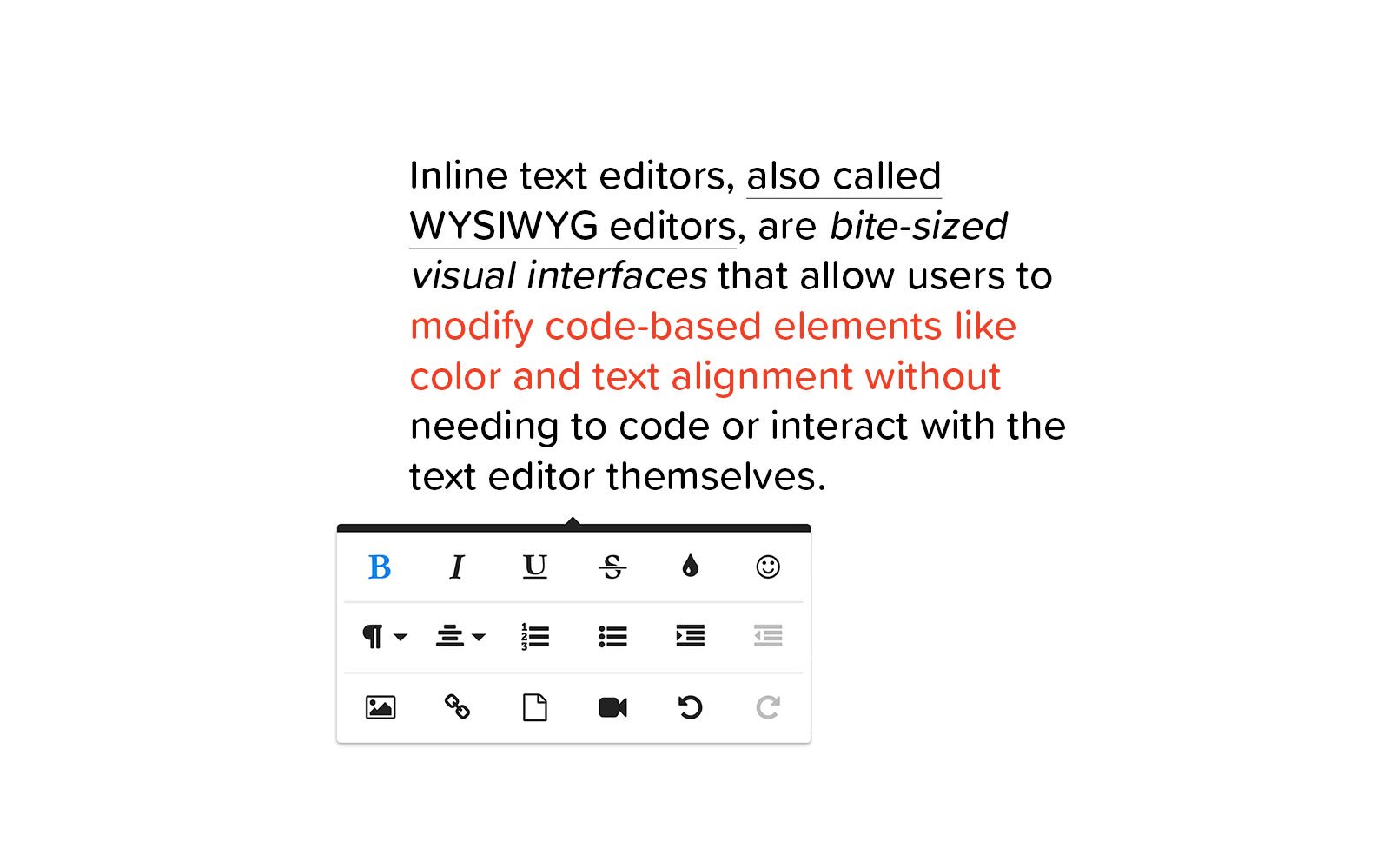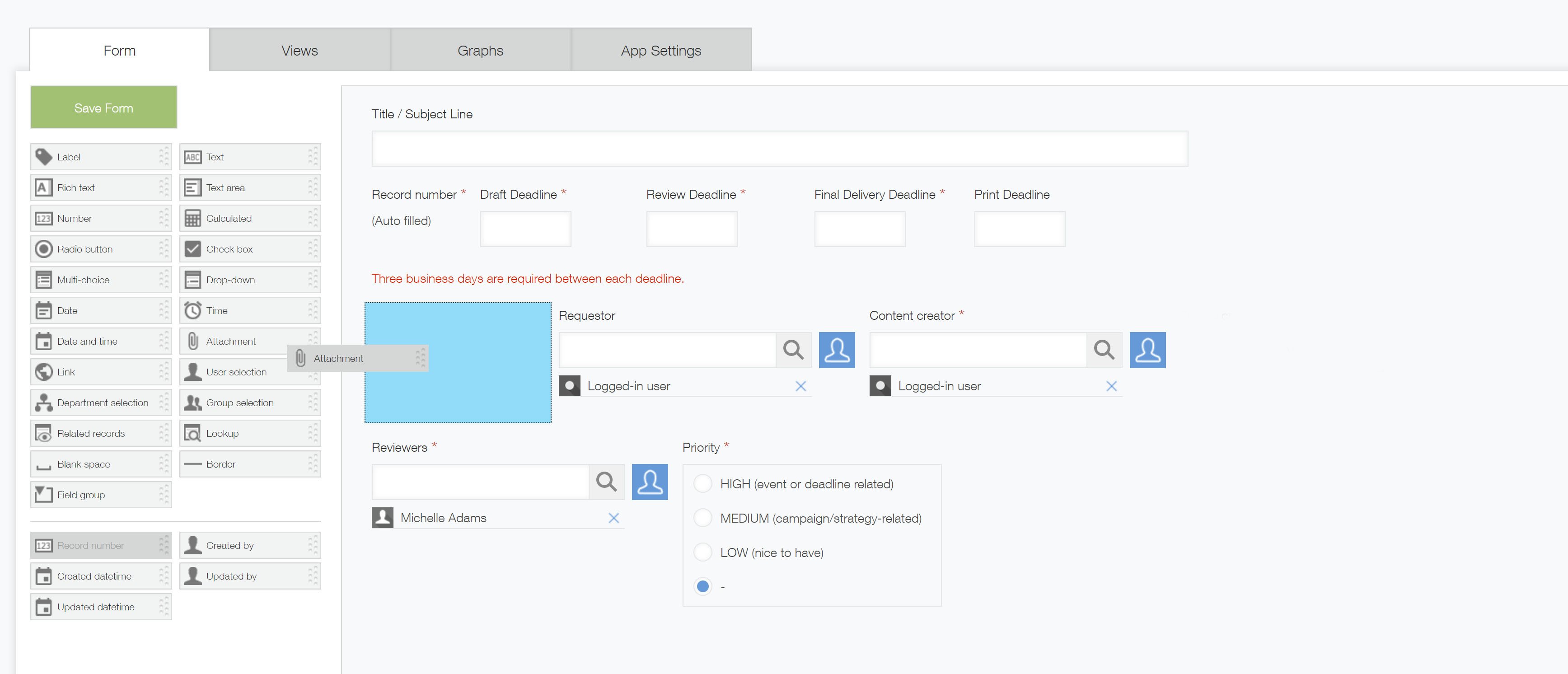In our last piece, we explored why software development is 1) becoming an increasingly important skill for all business professionals and 2) is easier to learn and master now with the development of no-code tools.
In part two of our We're All Software Developers Now series, we’ll focus on what makes no-code platforms so valuable to your path as a software developer, and how that might look on a more practical level. If you haven't read part one, we strongly recommend starting there to get the full picture!
When you think of software development, you probably picture coding interfaces filled with lines of text. And unless you actually want to be a programmer, odds are diving into that Matrix-like world is the last thing you want to do. It’s understandable: coding programs require extensive education, skills-development, and practice. Many programmers argue that coding also requires completely rewriting the way you merely acquire skills, but also restructuring your brain to accommodate them.
Luckily, change is happening on both sides of this equation: While you’re being pushed to become more comfortable working with software, programming technology is changing to accommodate you where you are. That’s the technological advancement and accessibility parallel again—and it’s finally reaching you.
Your Biggest Asset As a Programmer Isn’t Writing Code
But this time, you don’t need to learn an entirely new skill set. And contrary to what you may be hearing, your prior skills are actually really valuable. The fact is, it’s not knowledge of text editors that’s going to make you an effective programmer, it’s knowledge of your specific field. Only you know what will make your job easier—and the knowledge you have about what would make your workflow faster and more effective is knowledge that no “regular” programmer has.
Think about it this way: you’re not just gaining programming skills to help your company with random IT needs that it can’t fill, you’re gaining programming skills to help fill your own IT needs—to solve the problems that get in the way of you and your team’s ability to do your jobs as efficiently and effectively as possible, every single day. Now, with the advent of visual programming, you have the capability to rebuild, restructure, and reorganize all of those processes yourself.
Believe It or Not, You Already Use Visual Programming Tools
When every company becomes a software company, every employee will need to become a software developer. And visual programming is how that’s going to happen. Even if you don’t realize it, you’ve probably done some visual programming before. Visual programming tools don’t fill your screen with lines of code text. Instead, the user interface is, as the name suggests, visual. The act of programming consists of dragging and dropping graphics, just like you do in many of your favorite consumer websites, social media tools, and apps.
READ ALSO: A Crash Course: Who Are Citizen Developers and What Can They Do?
While WYSIWYG editors and similar tools are a form of visual programming, in this case the technology is being reapplied. You’re no longer using those tools to add cute lines and colors to text—you’re using them to build powerful, customizable databases and workflows optimized to meet your specific needs. And, you can start using them the second you’re done building them.

Inline editors are commonplace in the office; we often use them without thinking about their broader application to software development. specific needs. And, you can start using them the second you’re done building them.
By manipulating graphics with drag-and-drop features, you’ll customize your own applications and build your own software displays. You’ll build your own database tables, reports, and graphs to uniquely fit your business data. Visual programming won’t just make your life easier, it’ll make your work better. And it’ll turn you into a software developer at the same time. Forrester estimates that visual programming methods can develop software up to 10 times faster than traditional methods, and that doesn’t even take into account the sheer number of people who will be able to do it.
READ ALSO: Can Drag-And-Drop Really Get You the Custom Software You Want?
When you and your team begin to build and customize the technology that you need to get your jobs done, your entire company will run smoother, faster, and smarter. Your company will increase its software development throughput dramatically, and you’ll cut the costs of Shadow IT apps. Your coworkers in IT will finally be able to catch up on backlogs—and they’ll finally have lives. The transition will be collaborative. Visual programming tools like Kintone’s operate across one, completely integrated platform, so business data collection and communication across the company will become seamless.

This screenshot of the Kintone application builder shows how individuals can quickly build enterprise applications specific to their needs without writing a line of code.
Why Your Company Needs Your New Programming Skills to Survive
Visual programming gives you and everyone you work with a chance to fundamentally reimagine the way you do work—and the way you use technology to do it. You can design a system that works for your role, for your company, and for your field, rather than struggle within systems made by developers with no knowledge of your day-to-day tasks and responsibilities. For the first time in history, we’re all getting the opportunity to create software from scratch, and optimize it to fit our jobs.
Many of the platforms that provide visual programming tools are fully integrated. This means you’re no longer toggling between multiple apps and databases and spreadsheets every day. People talk about the inefficiency of traditional software solutions like email and spreadsheets—but when has there been a viable alternative? Now, you’re able to build software that not only solves these problems, but bypasses them completely: Customizing, centralizing, and streamlining your workflows in ways that were previously unimaginable.
Integrating data and communication onto a single platform will drive up productivity, knowledge capture, and satisfaction. You’ll be able to spend more time on the aspects of your job that you enjoy. You’ll rebuild your old systems to fit your current needs. And you’ll communicate more efficiently with your coworkers and clients. One study found most people average only 3 minutes on any given task before switching to something else (and only 2 minutes on a digital tool before moving on).
"The average employee spends eight hours of their work week searching for information." -McKinsey Global Institute
How to Become a Visual Programmer: Taking Control of Your Future
By now you’re wondering—how do I get started on my journey to become a visual programmer? The answer is simple: get your hands dirty. The great thing about visual programming is you can begin experimenting right away. So try building your first app. It may seem daunting at first, but once you begin, you’ll be amazed at what you can accomplish.
Choosing the right idea for your first app is key. Try to focus on a small, contained problem you can solve within a couple weeks. Maybe there’s a spreadsheet process that’s been annoying you that you want to improve. Maybe there’s a simple team dashboard you’ve been wanting to build. Starting with small ideas will help you build confidence as you work your way towards solving bigger problems—and building more complex apps.
Next, it’s time to start prototyping. Visual programming tools like Kintone are great for rapid prototyping because they let you experiment freely, without fear of breaking anything. Simply create a trial and start playing around. Using Kintone’s visual programming tools, you can quickly put together a data model, interface, dashboards, and custom processes—all without having to write code.
Luckily, there are tons of online resources to help you learn. Kintone has a wide range of training videos on YouTube, an online developer community, and annual events where you can learn new skills and become a better visual programmer.
Be sure to watch these training videos as you build out your first app—they’ll be a huge help. And when you have questions, hop into the Kintone community to get answers. One of the most important tools for a new visual programmer is being able to connect with other visual programmers—and Kintone’s community is full of companies, nonprofits, and individuals who have built amazing applications using these awesome tools. So don’t hesitate to get in the mix.
About the Author











